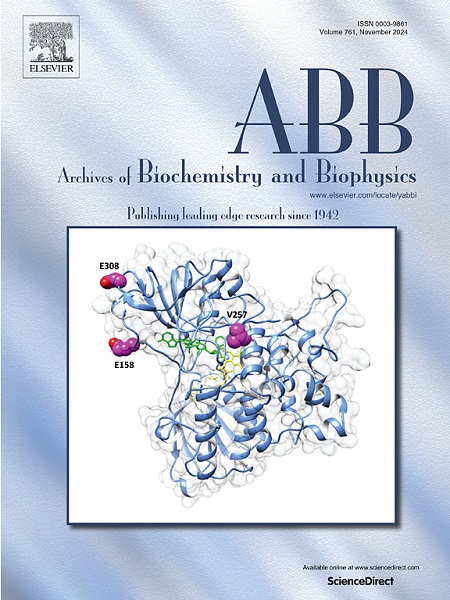Altering substrate specificity of a thermostable bacterial monoamine oxidase by structure-based mutagenesis
IF 3.8
3区 生物学
Q2 BIOCHEMISTRY & MOLECULAR BIOLOGY
引用次数: 0
Abstract
Bacterial monoamine oxidases (MAOs) are FAD-dependent proteins catalyzing a relevant reaction for many industrial biocatalytic applications, ranging from production of enantiomerically pure building blocks for pharmaceutical synthesis to biosensors for monitoring food and beverage quality. The thermostable MAO enzyme from Thermoanaerobacterales bacterium (MAOTb) is about 36 % identical to both putrescine oxidase and human MAOs and can be efficiently produced in Escherichia coli. MAOTb preferentially acts on n-alkyl monoamines but shows detectable activity also on polyamines and aromatic monoamines. The crystal structures of MAOTb in complex with putrescine, benzylamine, spermidine and n-heptylamine at resolution ranging from 1.6 to 2.3 Å resolution revealed the binding mode of substrates to the enzyme. The MAOTb active site is highly conserved in the inner part of the cavity in front of the flavin ring (re face), where the presence of two tyrosine residues creates the substrate amine binding site that is found also in human MAOs. Instead, more distantly from the flavin, the entrance of the catalytic site is much more open in MAOTb and features a different arrangement of amino acids. Site-directed mutagenesis targeting residues Ala168, Thr199 and Val324 allowed the identification of key residues in ligand binding to alter substrate specificity. The A168D variant showed a higher activity on putrescine than wild-type, whereas by replacing either Thr199 or Val324 to Trp a marked enhancement in kcat/KM values was found on n-alkyl-monoamines and on aromatic amines.

通过结构诱变改变耐热细菌单胺氧化酶的底物特异性。
细菌单胺氧化酶(MAOs)是一种fad依赖蛋白,在许多工业生物催化应用中催化相关反应,从用于药物合成的对映体纯构建块的生产到用于监测食品和饮料质量的生物传感器。来自热厌氧杆菌(maobs)的耐热MAO酶与腐胺氧化酶和人的MAO酶相同约36%,可以在大肠杆菌中高效生产。maoth优先作用于正烷基单胺,但对多胺和芳香单胺也有可检测的活性。MAOTb与腐胺、苄胺、亚精胺和正庚胺配合物在1.6 ~ 2.3 Å分辨率范围内的晶体结构揭示了底物与酶的结合方式。maoth活性位点高度保守,位于黄素环(re face)前面的腔体内部,其中两个酪氨酸残基的存在产生了底物胺结合位点,这也在人类MAOs中发现。相反,在离黄素更远的MAOTb中,催化位点的入口更加开放,并且具有不同的氨基酸排列。靶向Ala168、Thr199和Val324残基的定点突变可以识别配体结合的关键残基,从而改变底物特异性。A168D突变体对腐胺的活性高于野生型,而将Thr199或Val324替换为Trp后,其对正烷基单胺和芳香胺的kcat/KM值显著提高。
本文章由计算机程序翻译,如有差异,请以英文原文为准。
求助全文
约1分钟内获得全文
求助全文
来源期刊

Archives of biochemistry and biophysics
生物-生化与分子生物学
CiteScore
7.40
自引率
0.00%
发文量
245
审稿时长
26 days
期刊介绍:
Archives of Biochemistry and Biophysics publishes quality original articles and reviews in the developing areas of biochemistry and biophysics.
Research Areas Include:
• Enzyme and protein structure, function, regulation. Folding, turnover, and post-translational processing
• Biological oxidations, free radical reactions, redox signaling, oxygenases, P450 reactions
• Signal transduction, receptors, membrane transport, intracellular signals. Cellular and integrated metabolism.
 求助内容:
求助内容: 应助结果提醒方式:
应助结果提醒方式:


